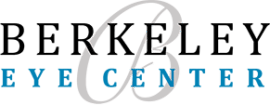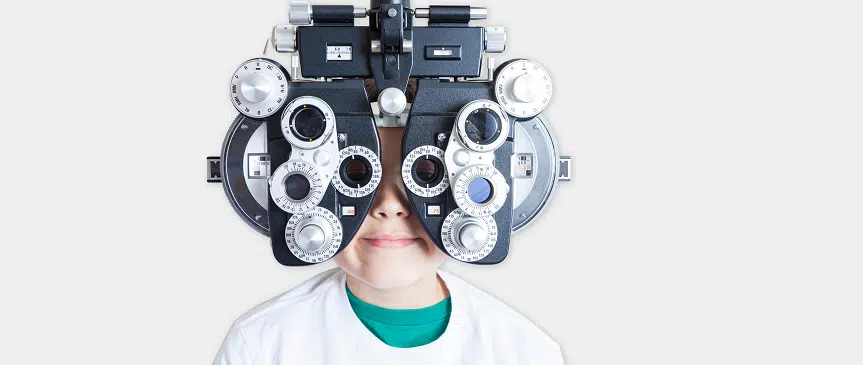Myopia Control for Children
Have you noticed your child’s nearsightedness (myopia) getting worse, especially with increased screen time and indoor lifestyle? Myopia has become increasingly common among children, and its progression can lead to a higher risk of eye problems later in life, such as cataract, glaucoma, and retinal detachment. The prevalence of myopia is expected to rise in the coming years, emphasizing the need for effective control methods.
Table of Contents
What Is Myopia?
Myopia is a common vision condition where objects nearby appear clear, but objects farther away appear blurry. It occurs when the shape of the eye or certain parts of the eye causes light rays to focus in front of the retina, rather than on the retina itself.
Common signs of myopia in children include difficulties seeing things on whiteboards or screen projections in the classroom. They might squint persistently, appear unaware of distant objects, rub their eyes frequently, or sit close to the television.

What’s It Like Living with Myopia?
Living with myopia can present various challenges for kids, from blurry vision affecting their ability to perform well in school and enjoy everyday activities to eye strain and headaches from trying to focus on objects that are far away.
The images below illustrate how a child with myopia sees the world. Diopters are a unit of measurement used to express the degree of nearsightedness or myopia a person has.
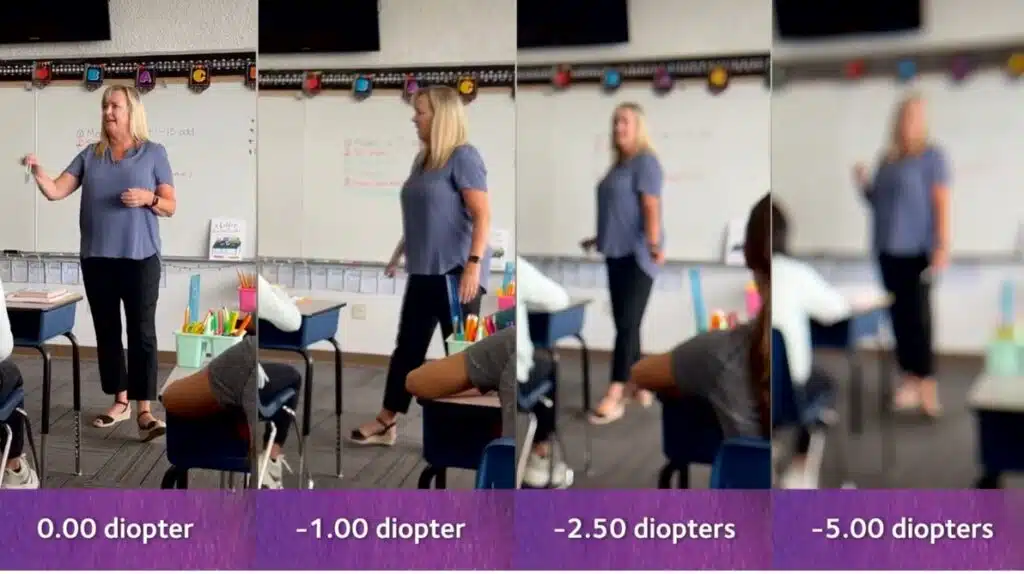
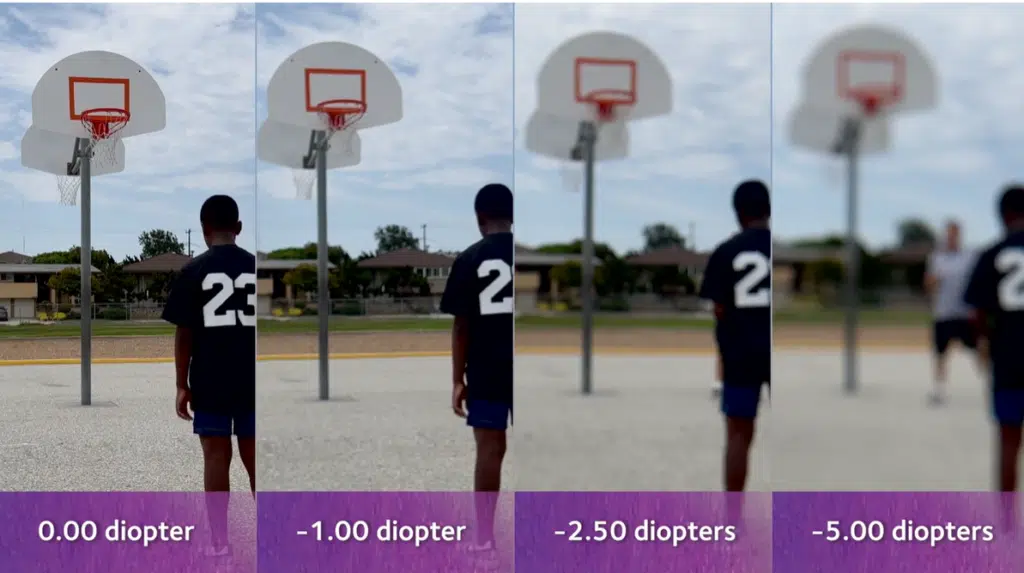
What Causes Myopia?
Genetics
The likelihood of children developing myopia is:
- 1 in 2 when both parents have myopia
- 1 in 3 when one parent has myopia
- 1 in 4 when neither parent has myopia
Lifestyle
Modern lifestyle factors may influence the development of myopia:
- Insufficient time spent outdoors
- Extended time on digital devices
- Poor lighting levels
Myopia Management Options for Children
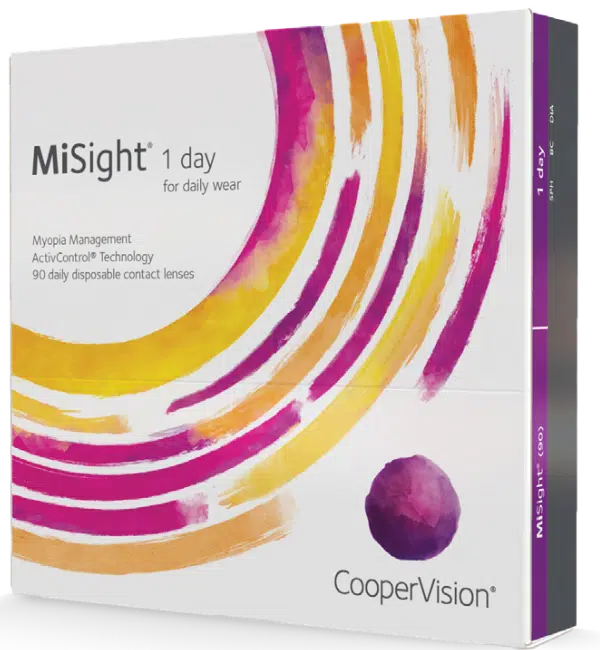
Myopia management in children is of significant importance for various reasons. When a child has myopia, the eye grows too long from front to back, causing light to focus in front of the retina instead of directly on it. While distance-only glasses and contact lenses have been the traditional methods of vision correction, they may actually contribute to the worsening of myopia over time.
Berkeley Eye Center offers several different contact lens options that have been proven to slow down myopia in children. Our most popular treatment and most effective treatment is the MiSight 1 Day Contact Lens treatment. MiSight 1 day is a daily disposable soft contact lens that proven to slow the progression of myopia in children, aged 8-12 at initiation of treatment.
We also offer Ortho-K, atropine drop treatments and bifocal glasses.
We recommend starting myopia control at the onset of myopia, which is typically between the age of 8 and 16. The earlier the intervention, the less myopic the child will become and the less likely he/she will be at risk for glaucoma, retinal detachment, cataracts, and myopic maculopathy.
Need to make an appointment?
Have a question about Myopia Control for Your Child? Call any of the below locations with a MySight Certified doctor.
- Atascocita
- Champions
- Clear Lake
- Cleveland
- Dayton
- Grand Oaks
- Katy
- Kingwood
- Memorial
- Pearland
- The Shops
- Tomball
- Weslayan
- The Woodlands
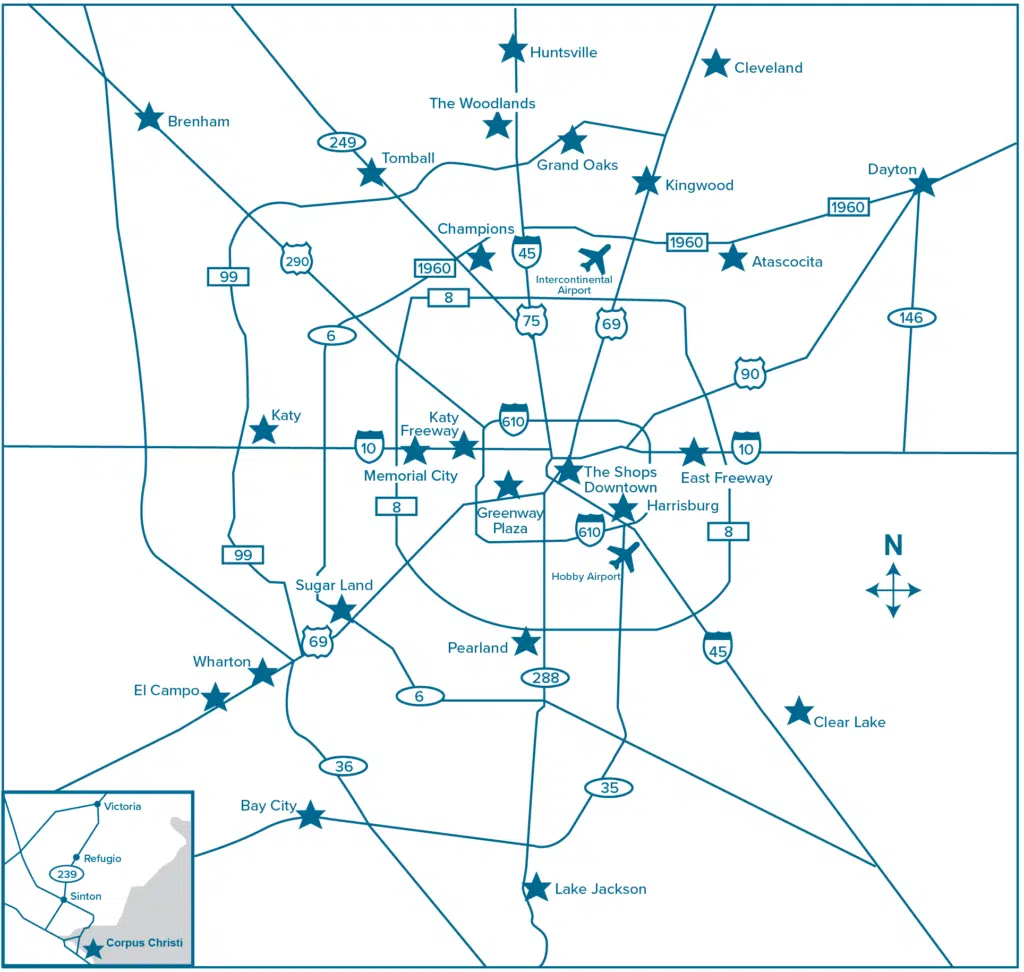
Common Questions About Myopia Management for Children
Is myopia genetic?
Children who have parents that also have myopia are much more likely to become myopic. There are also environmental factors that cause myopia which include increased amount of near work and lack of outdoor time.
What are the implications of being myopic?
Patients who are myopic are at a significantly higher risk of developing glaucoma, a retinal detachment, and a specific type of visually debilitating cataract. In addition, patients who are highly myopic are at risk of developing a potentially blinding condition called myopic macular degeneration.
What can be done to PREVENT myopia?
Several studies have shown that children who spend more time outdoors are less likely to become myopic.
What can be done to CONTROL myopia?
Berkeley Eye Center offers several different contact lens options that have been proven to slow down myopia in children. Our most popular treatment and most effective treatment is the MiSight 1 Day Contact Lens treatment. We also offer Ortho-K, atropine drop treatments and bifocal glasses.
What is the ideal age for starting myopia control?
The best time to start myopia control is at the onset of myopia which is typically between the age of 8 and 16. Keep in mind that the earlier the intervention, the less myopic the child will become and the less likely he/she will be at risk for glaucoma, retinal detachment, cataracts, and myopic maculopathy.
